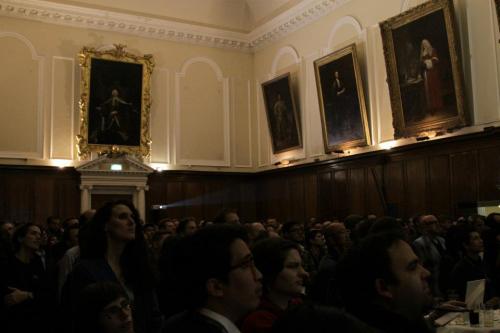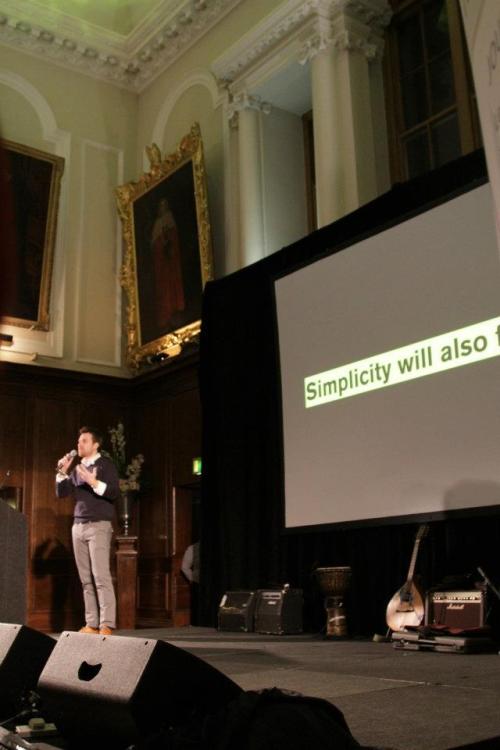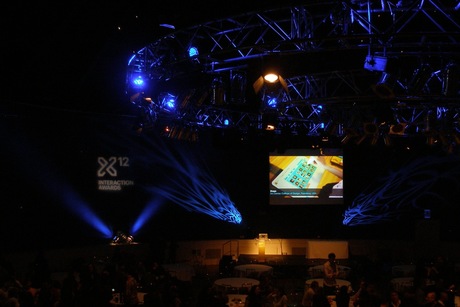Dear User Experience Forum,
it has been quite a while since our last newsletter. Lot’s of things are happening around us, and we are one of the significant forces to shape the present and future. At least we should! User Experience matters. More than ever.
At interaction|12 I had a chat with a next gen PhD student. Well, “next gen” is of course relative to my point in life. He was very enthusiastic about the possibilities of all the new mobile devices. According to him, now is the time to apply design to technology, as opposed to the eighties of the previous century, when engineers built the desktop systems. – Hmm, he was right and wrong. Times are exciting. They have always been. But human factors, software ergonomics, human interface design, usability, information architecture, interaction design, design thinking, service design, user experience, …, are not new at all. It is no surprise that your products, sites, and services are much more successful once you start with the user in the center of the design considerations.
Oops, I wanted to write about something else. So please take my preaching above as a preface.
Radio days are back!
Should I tell the story chronologically, or are you already used to think backwards like in blogs, micro-blogs, and activity streams? All the reverse navigation structure really bothers me, because it is the only option. [at this point, imagine the results of a design workshop about alternative visualizations of time based content.] I will tell the story the old fashioned way.
Once upon a time… :o) I bought an mp3 player in the US; in fact I ordered it to be delivered to a friend in San Francisco. Later Jo told me the story how the FedEx guy presented the package to him, “Hello! Your new Apple iPod Nano has arrived!!” Isn’t it astounding that even unrelated employees spread the joy about certain products?
Years later, and a few months ago, Apple informed me that my Nano could catch fire, and they offered another Nano in exchange. This is bitter & sweet, because the product design of the first generation Nano, and the story how the device came into my possession made it so special that I did not want to send it back to Apple. – I did it anyway and received the latest model in return. I still do not like it very much. Though, I can listen to FM radio and connect it with my sneakers!? Just one new feature is the reason for me not to abandon the Nano and get an original Nano back from eBay: I discovered Voice Memo. But it I took me a while until I figured out that a microphone has to be connected to the jack for the ear phones to start recording.
I rarely talk to myself – and thinking-aloud should be reserved for other situations. Instead I record sessions from our local UX community in Hamburg with the intend to publish a podcast. Again, this sounds easier than it was. OK, a podcast is basically an RSS feed with links to the episodes. Now what? How to prepare the audio files in an appropriate quality? Where to store the files? How to create the feed?
I found a few good tutorials online, and looked behind the curtain of other podcasts like the BayCHI Podcasts, The LongNow Seminars, Jan ‘s IATV Radio, and Tobi’s Einschlafen Podcast.
And here it is [drum roll] the uxHH Radio at uxhh-radio.blogspot.de.
The recent three episodes happen to be English sessions. We have
- Karen MacGrane, Bond Art + Science, New York, about flexible content for mobile devices
- Josh Clark, Global Moxie, New York, about the 7 deadly myths of mobile, and
- Darius Kumana, ThoughtWorks, London, about Getting Beyond Good Enough – the marriage between agile and UX.
Previous episodes are taken from HyperKult in Lüneburg and my Raum Schiff Erde unconferences in Hamburg. I might add other (bootleg) recordings as well, but I will stick to UX in the Northern part of Germany.
I hope you tune in and find inspiration by one of the podcasts mentioned above.
Or let us know your favorite channel.
thanks for listening!
Matthias









